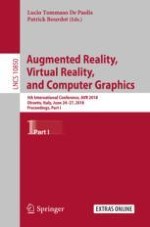2018 | OriginalPaper | Chapter
The Effect of Gait Parameters on the Perception of Animated Agents’ Personality
Authors : Santi P. Badathala, Nicoletta Adamo, Nicholas J. Villani, Hazar N. Dib
Published in: Augmented Reality, Virtual Reality, and Computer Graphics
Publisher: Springer International Publishing
Activate our intelligent search to find suitable subject content or patents.
Select sections of text to find matching patents with Artificial Intelligence. powered by
Select sections of text to find additional relevant content using AI-assisted search. powered by
